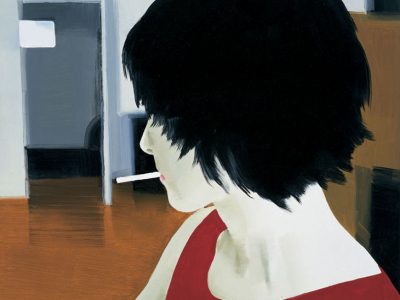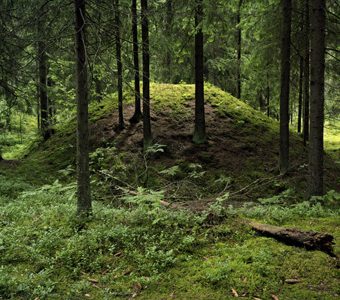Ist das Leben nicht schön? Chapter 4. Tommy Støckel
13.12.2006 — 04.03.2007
All limits are unlimited; this maxim – a contradiction in terms – defines the logic of Tommy Støckel’s work. His installation presently on display at the Frankfurter Kunstverein has been specially made, taking into account not only the physiognomy of the first floor of the Frankfurter Kunstverein, where it is placed, but also the particularities of the building itself and its relationship with the Römerberg and Dom Square. In that respect the artist has created two architectural environments: the arcade and the ruin. A series of architectural structures that constitute the physical and mental landscape for other works to appear: a large number of sculptures – some of them earlier works, and some new productions – and a series of collages. Tommy Støckel absorbs and reinterprets very different kinds of sources in the design of his pieces. One is the 8-faced solid depicted by Albrecht Dürer in his famous engraving Melancholia I (1514) that reappears in Støckel’s floor piece Exposed Superstructure (2006). Another is The Powers of Ten a 10-minute documentary film by Charles and Ray Eames, which lends its name to another of Støckel’s works. These, among others, together with the very notion of history and the building where the Frankfurter Kunstverein is located, all find their place in this large-scale installation. Some of the work-titles are also quite telling in that respect: Clash of the Classics, The Great Destroyer, Even Great Futures Will One Day Become Pasts, (Broken) Tree, Time Told by the Shape of a Shadow, Against the Weight of the World, It’s Never Forever, The Take-Over (Bench), Crystal Ivy, Exposed Superstructure, etc….The notion of interpretation, scale and time, as well as how knowledge is transmitted are central to an understanding of his work and work methodology. How do we interpret an image? Which kind of information carries a form? Can science and physics translate into art? How do different disciplines interconnect?
The installation at the Frankfurter Kunstverein tried to “shape” these particular questions – the work represents an effort to understand how form and content are related, how visual and textual references relate to each other. The works give a particular shape to ideas; a mold that facilitates a certain state of mind and perception. The whole installation by Tommy Støckel constitutes a strange and appealing non-place, but even non-places need to be put together out of already existing representations.



